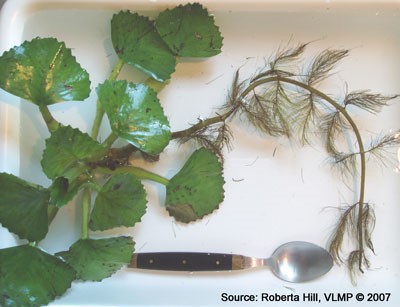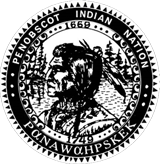Community News

Water Chestnut
Description: Water chestnut has two distinct leaf types. The floating leaves are somewhat triangular (or fan shaped) in form, with clearly serrated along the outside edges. The upper surface of the leaf is glossy, the undersides covered with soft hairs.
Habitat: Water chestnut grows in the floating-leaf and underwater plant community. It thrives in the soft sediments of quiet, nutrient rich waters in lakes, ponds and streams. The plant is well adapted to life at the water’s edge, and prospers even when stranded along muddy shores.
Annual Cycle: Unlike most water plants, water chestnut is a true annual. Plants sprout anew each year from seeds overwintering in the sediments. Underwater stems grow rapidly to the surface, where the floating rosettes form and the flowers and fruits develop. During the growing season rosettes may become detached and float to new areas. Water chestnut flowers from July to September. The fruit, or nuts, begin to appear by late summer. Each water chestnut seed can produce 15 to 20 new rosettes and each rosette can generate up to 20 seeds. At the end of the growing season, frost kills the plants and decomposition is rapid. The nuts fall and sink into the sediment where they overwinter and sprout in the spring. The nuts may remain viable for up to 12 years but most germinate within 2 years. The nuts have sharp barbs that readily attach to boating gear and wildlife and are easily dispersed by natural and human processes.
Origin and U.S. Range: Water chestnut is native to Europe, Asia and tropical Africa. It is cultivated in Asia and other parts of the world where the fruit is eaten. It was brought to this country in the late 1800s as a showy botanical garden specimen and later escaped to become a noxious aquatic invader. Nearby populations occur in New Hampshire, Connecticut, Massachusetts, New York, Vermont and Rhode Island.
Look a likes: Water chestnut is not easily confused with other aquatic plants.
